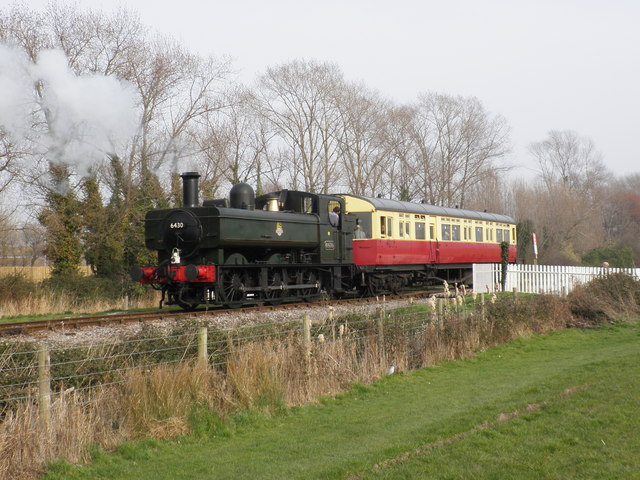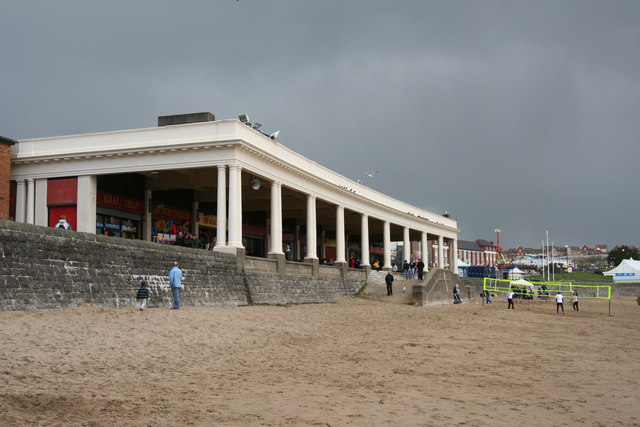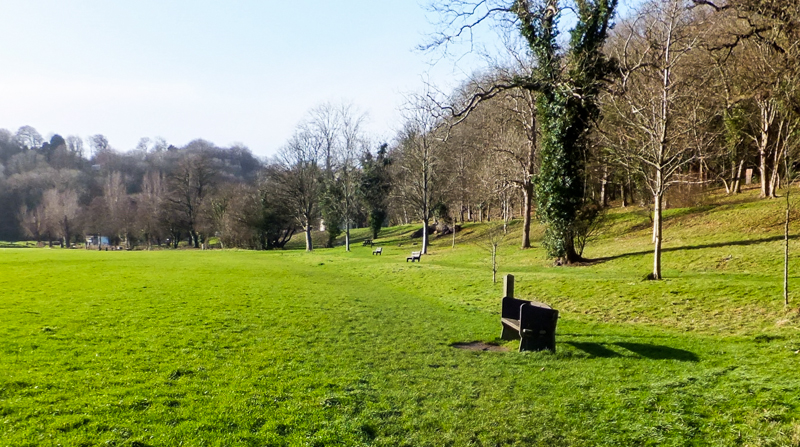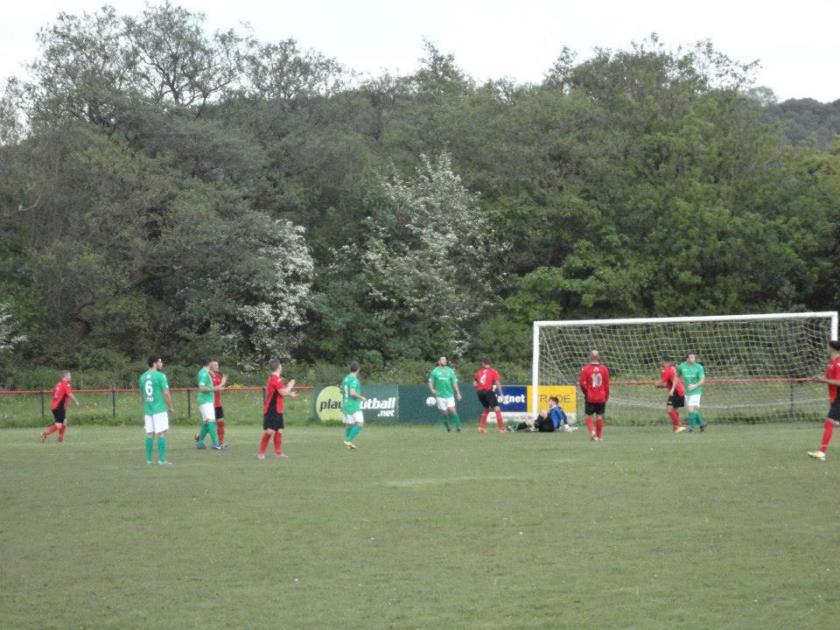The town of Barry does not always attract the best publicity. I have never lived there, but I attended the town’s Teacher Training College for three years in the late sixties and early seventies and still make frequent visits. I have family and friends who live there.
There are many reasons for Barry’s decline over the past years. To my mind the main reason was Cardiff. For many years after county council reorganisation Barry found itself as part of South Glamorgan. It was at the time of Cardiff’s huge Bay regeneration programme and sadly all the county’s time, effort and cash was diverted into that project. It meant that towns like Barry were left to slowly decay. Thankfully in the past few years, especially since South Glamorgan was split and The Vale of Glamorgan was created, much effort has gone into lifting this lovely Welsh town out of the doldrums and giving it a bright new future.
I am alarmed that the Welsh Assembly government is thinking of giving Barry back to Cardiff. That must never happen.
I love Barry – here are ten good reasons why!
- Glamorgan College of Education
I attended The Glamorgan College of Education from September 1969 until June 1972. It was a brilliant three years. I left qualified to teach, something I enjoyed for the next almost 40 years. I think I learnt more in my first week of teaching than I did in three years in College, but it was still a great place to be and I am still in touch with a few of my student friends.
I lived at home during those three years but often stayed with friends in the ‘dorms’. I remember there were three residences – two in the main old building. Morgannwg, (affectionately known as Forgy) was the name of the male dorm and Gwent was the girls’, but they also had a modern tower block, which went by the name of Hafren. Morgannwg and Gwent were Welsh county names and Hafren is the Welsh for Severn as in the River I think.
I remember are representing the college in table tennis and during one league match took a game off a former Welsh champion. One other thing was that the college football team were at one time coached by Mel Sutton, the Cardiff City midfield hard man. He used to give me a lift home after training and we became friends and for several years he gave me free tickets to all the Cardiff City home games.
I remember sitting in lectures and watching the old steam trains being transported off to new homes from the Barry Scrapyard. Barry is very hilly and the low loader lorries would strain every sinew, as they crawled up College Hill. Academically, all I remember are the Welsh lectures with John Bevan, who owned a Capri – he also gave me a lift to college quite often and an English lecturer called Cenwyn Thomas, who gave me two wonderful things – a great love of reading aloud and a love of the poems of William Wordsworth.
As the thoughts come flooding back, I also remember the college PE lecturer, a great guy called Stevie Banks, whose cry of ‘Come on lads up the Butts!’ was a call to treck across several roads to the Buttrills playing fields, where we would learn how to become PE teachers. Steve was also an avid sailor and his cries of ‘Sail before Steam!’ could be heard regularly on the weekend in the waters around Barry.
The drama department was based in the old Drill Hall and we would wander down the hill to lectures. It’s a funeral home now.
The old college is gone now and the old buildings are a nursing home. The old Maths department is a pub but I think the swimming pool still remains!
- Barry Island
I spent many happy hours in Barry Island as a child. My mum and dad would take us on the train from Llanishen Station to Barry Island on a regular basis. Most of the journeys were on steam trains. Unforgettable bliss!
On the way, we would hold our breath after Grangetown Station, as the train would take one of two routes as it approached Penarth. The short way was via Cogan, Dinas Powys and Cadoxton and on to Barry, but the long way, which always brought groans from us kids, was through Penarth via Dingle Road, Alberta Place Halt, Swanbridge, Lavernock and Sully, before joining the main line near Cadoxton. I would give my right arm to be able to travel that line again on a steam train. Sadly houses have been build on the track bed in some places and so that dream will never become a reality and I will never have to learn to write with my left hand!! A few years ago I did walk the old line from Biglis Roundabout to Penarth Station. I had to sneak through a garden near Lavernock but an amazing amount of track bed is still left.
The journey home would be made smelling of calamine lotion as we always got sunburnt and spent two days in agony every time. No sun cream or after sun gel in those days!
Barry Island had and still has a magnificent beach; on our many visits, we always sat by number 5 on the sea wall and therefore never got lost despite the massive crowds, which went to the beach in those days. We have so many happy memories of sandcastles, candyfloss, toffee apples and chips.
If only the water was clearer it would be perfect!
- Memorial Hall
Barry Memorial Hall (The Memo) is such a great building.
The Memo Arts Centre is the largest multi-arts venue in the Vale of Glamorgan, and only cinema exhibitor in Barry. It is a vibrant and crucial hub for the local community and those living beyond, known as a friendly, accessible place, where users come to make, see and participate. Barry Memorial Hall was built at a cost of £23,000 with donations by Major Davies and his sisters totalling £10,000. It was originally opened in 1932/3 but was gutted by fire in 1943 and not rebuilt until 1957.
On the 11th November 2007, the Memorial Hall and Theatre marked its 75th anniversary with the rededication of the Hall of Memory and Cenotaph following extensive refurbishment. Over 2,000 visitors attended the celebration.
The Memorial Hall and Theatre in Barry, has over its 75-year history, played a major part in the cultural lives of Barry residents and those further a field. It is situated near the Waterfront, it has a valued reputation for presenting a broad programme of professional theatre, music and dance events.
The entrance hall has an impressive reminder of all the men and women from the town who lost their lives in the two world wars.
Stunning – a fitting memorial to our heroes!
- Barry Docks
The development of Barry began with the construction of the docks in the 1880s. Eight miles from Cardiff, it was one of the largest dock areas in the world at that time. It transformed the village with a then population of some 85 people.
Millions of tons of coal were exported from the docks and hordes of day-trippers used the railways, built to carry coal, and enjoyed the sands of Barry Island.
David Davies the industrialist created The Barry Docks and Railway Company. He left an estate valued at nearly £405,000 when he died in 1890. A bronze statue of David Davies stands before the Dock Offices at Barry sculpted by Alfred Gilbert, who designed Eros’ statue in London.
The Dock Offices at Barry cost £59,000 to build. Constructed of red brick and Portland stone, a clock tower was added at an additional cost of £6,000. It has a ‘theme’ of the calendar. There are four floors – the seasons of the year; seven lights in the traceried fanlight window – days of the week. The porch has twelve panels – months of the year.
Within the building are 52 marble fireplaces – weeks of the year. The windows number 365 days, one for each day of the year. Each window has four panes of glass – weeks to a month. In the east and west walls of the entrance hall are two circular windows – Sun and Moon. The staircase, made of Portland stone, has 31 steps (days of the month) from ground to first and second floors and has an ornamental ironwork balustrade with circular foliage and fruit trails.
The trade through the docks fell steadily as the steam coal was replaced by oil as the major energy source in ships and factories.
Today, it is very quiet and very few ships use the docks, but I love the history. The Dock Offices are now the headquarters of the Associated British Ports.
Not so long ago, I was given a ride on a ship from Cardiff to Barry and entering the docks with its rich history was a thrill for me.
- Porthkerry Park and Viaduct.
Porthkerry Park is another place that figures highly in my childhood and teenage years. As far as I can see Porthkerry Park has a Barry address and so is included here!
Porthkerry Park is a large, public country park on the coast next to Barry. It has fields, extensive woodland and nature trails, cliff-top pathways, a pebble-stone beach and a small golf course. Architecturally, it is noted for its prominent viaduct that helped with the transportation for coal to the port of Barry in the 19th and 20th centuries. With the combination of green areas and the coastal location, the park is such a great place to visit and one I visited many times as a child and a teenager and indeed many times since. I remember many times having barbecues on the beach.
On the northern side of the park is the site of the old village at Cwmcidi (meaning Valley of the Black Dog), which came into existence before the middle of the 13th century.
In 1622, Cwmcidi contained 5 houses bordering “Comkedye Street”, interspersed with a number of tofts (dwelling sites) plus three scattered dwellings. By 1812, there remained only three cottages and a farmhouse. The cottages were finally swept away in the 1840s when the area was landscaped by the Romilly family to form Porthkerry Park. The name – although slightly anglicised lives on in the area, in the form of a nearby public house, The Cwm Ciddy. It’s the place I took Boo when we got engaged.
The park is maintained by two rangers, one of whom has a residence at a quaint, old cottage along the main park road.
- Cold Knap
Cold Knap is such a lovely place, but used to be a fantastic place when I was young. Nowadays, Cold Knap, sitting at the posh end of Barry is popular for its quiet, pebble beach with its fine views around to Porthkerry.
It has a small lake, which is in the shape of a harp. It’s a lovely place to walk around.
When I was young it was THE place to go but only for one reason – the open-air baths.
For many in and around South Wales, a day out at Barry’s Knap Lido, or, as it was known locally, ‘The Baths’, was the perfect place to while away the happy, lazy days of spring and summer – even when the sun didn’t shine.
The pool was 120 yards long and 20 yards wide; the mostly-icy waters of Barry’s Knap Lido went from a toddler-safe few inches, to the seemingly bottomless deep end
The Knapsnak shop provided refreshments of the age; Cresta pop, Chipmunk crisps, pies and pasties and more – but the best thing of all was cups of OXO drink, which always warmed us up after a swim. There were some changing rooms, which you could use to get changed but theses were always packed out!
Sadly, after being left to decay after it’s closure it was ultimately filled in . There is currently a petition to rebuild and reopen this iconic landmark. My signature was one of the first! 
- Romilly’s Tea Shop
Romilly’s is a fairly new teashop that has opened in Cold knap. It’s a great little place where you can get tea and other drinks served in homely atmosphere. It has a very vintage feel about the place, which pleases my dear wife very much indeed.
- Barry Town United
I became a Barry Town United supporter in the 2013-2014 season, largely as a result of my son’s interest. He has always had an affinity with the hard done by in society and what happened to Barry Town Football Club in 2013 was a disgrace.
On 7 May 2013, Stuart Lovering, the owner of Barry Town inexplicably withdrew the team from the Welsh Football League against the will of the Barry Town Supporters Club, players and supporters, who were ready and willing to fulfil the remaining two fixtures of the season.
After the BTSC outlined their intentions to play again the following season, adopting the name of Barry Town United to emphasise their continuing unity and endeavour, a meeting of the FAW Council in Bettws y Coed June 2013 announced that they would not be allowed back into the league and instead would have to play “recreational football” henceforth. That meant this great club playing parks football.
This was a shocking decision by the inept FAW council, made up of life members, who appeared completely out of touch with the strength of local feeling. After significant public outcry, a second meeting was arranged for July 2013 in Caersws to hear new evidence as why the Barry Town Supporters Club should be able to continue at Welsh League level. At this second meeting, 15 of the FAW Councillors voted not even to discuss the club’s future, thus concluding the meeting within five minutes, a meeting that was held at considerable expense. It was an utter disgrace and brought shame on Welsh football. I wrote myself to every councillor and NOT ONE even had the decency to respond to me.
The outcomes of both meetings went against the recommendations of the FAW’s own Domestic Committee and legal team.
With their future unclear, the Barry team began their pre-season programme for 2013 with wins at Moreton and Elmore that same month, followed by a narrow 3-2 loss to Premiership newcomers Cardiff City, watched by a home crowd of 1,650 supporters on Saturday 27 July. Barry had remarkably led 2-1 at the break. This was my first taste of Barry Town United and I was hooked!
On 9 August 2013, a High Court judge in Cardiff ruled in favour of Barry Town United, saying that the FAW had acted unlawfully in denying Barry their licence. Barry were entered back into the Welsh League, along with a reformed Llanelli club that also benefited from the High Court decision.
Gaz and I followed them for the rest of the season attending matches at home and away. We have discovered a unique but close band of supporters who care passionately about the club. They are an absolutely hilarious bunch and every match they have me laughing my head off! This year I am acting as apprentice to Barry’s own one-man version of The Barry Horns, Terry, a great old guy who plays the bugle. He entertains crowds at home and away. Barry were the best-supported team in Division 3 last season by a country mile. We sponsored players, supported the fundraising and tried to devise as many ways as we could of avoiding Terry the bugler, when he came round selling lotto tickets.
Two things strike me about football at this level. The closeness of the fans, who look out for each other and send tweets of good luck to each other and the players and the fairness of the players. No drama queens, no fake dives, just honest, hard, genuine football, played by teams that just love playing football.
Barry Town United is a fan owed, fan run club and has brought back my love for the game big time! 2014 saw Barry Town United end up as Division 3 champions.
- Barry Scrapyard
Barry Scrapyard is no more but when I was younger it was one of the most amazing places ever. As a young man and indeed as a much older man I loved climbing over the rusting engines. They came to Barry to die and to be cut up but Dai Woodham had other ideas!
The story of the legendary scrapyard of Woodham Brothers at Barry is a truly remarkable one that involves so many sets of circumstances that would make a great novelist proud. The man who fostered the legend, Dai Woodham, became a name familiar with steam enthusiasts and preservationists alike. Dai entered into a contract with British Railways to buy their old redundant steam trains. On the 25th of March 1959, the first batch of engines was despatched to Barry.
Although the number of locomotives bought by Woodham’s was comparatively small at this stage, the size of the deliveries increased and between November 1960 and April 1961 alone, 40 locomotives were acquired from Swindon. Most but not all of these engines were scrapped soon after their arrival, but as the number of deliveries increased, additional storage was found at the low-level sidings adjacent to the oil terminal and also on sidings built on the site of the former West Pond which had been filled in as part of a land reclamation scheme. These additional sites were required for the number of Southern Region engines that Woodham’s began to purchase from mid-1964.
During 1965, 65 locomotives arrived at the Barry scrapyard, however, in the first six-month period 28 engines were dismantled but cutting virtually ceased from the autumn onwards as the scrap men concentrated instead on breaking up yet more freight wagons and brake vans. Dai found these easier to dismantle than the old steam engines. He continued to purchase further locomotives until the end of steam in 1968 with many of the later deliveries being of the BR Standard designs.
Altogether from 1959 until 1968, Woodham’s bought 297 locomotives, however by August 1968 only 217 remained at the Barry scrapyard. It was at this time that steam locomotive enthusiasts realised the potential that Dai Woodham’s yard presented to them – many classes had already become extinct but the main other source of steam engines for the future was to be this new phenomenon at Barry. The railway preservation boom began.
There are many preserved lines now across the length and breadth of Britain and most of them owe Dai Woodham and Barry a great debt of gratitude.
10. Glamorgan Wartime Heritage Centre,
This great exhibition is situated at the Barry Island Station. Barry and the surrounding area has a rich and varied heritage that stems back to Roman times and beyond; certainly, the first evidence of Barry`s wartime history is the Roman ‘mansio’, a sort of latter day inn or hotel for Roman officials at the Knapp.
Barry`s war heritage spans to modern times, with the docks being used during the Middle East conflicts of the late 50s and early 60s.
It is believed that during WW1 the first American troops to land in Britain, embarked at Barry, and during WW2 Barry became an important staging post for US Forces in preparation for the D-Day landings in Normandy………….such is the history of Barry at War.
The Glamorgan Wartime Heritage Centre located at Barry Island Railway Station is usually open the second Sunday of the month, and Wednesday afternoons (2-4pm, Jan – Nov).
It’s well worth a visit.








































